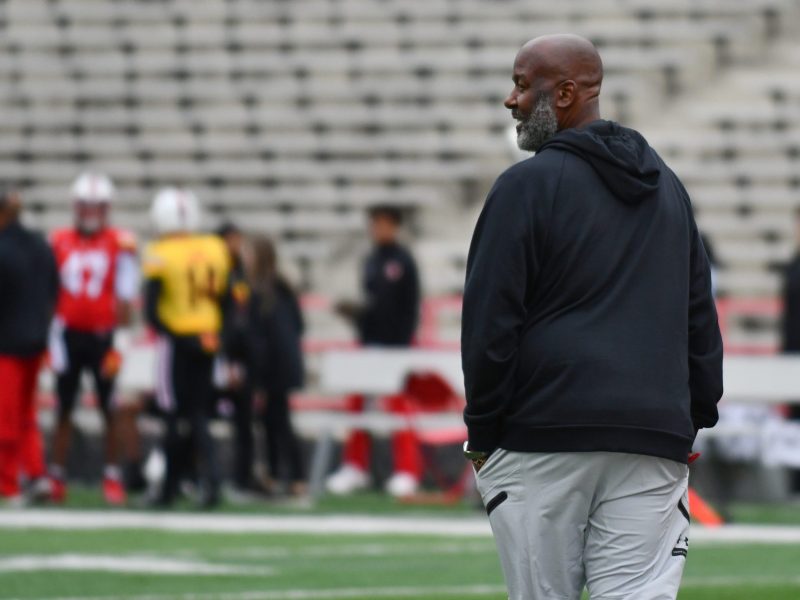CLARIFICATION: This story’s subheading has been updated to better reflect Brenda Frese’s comments on adapting to recruiting in modern college basketball.
To Brenda Frese, winning no longer translates to recruiting success.
“We went to the Elite Eight last year. That actually hurt us out of the transfer portal. For most kids anymore, it’s not about winning,” Frese said. “I can tell you that cause that’s the first year that I’ve taken a team as far as we have, and it moved the needle not for two seconds.”
Maryland’s 2024 class ranks 15th. The Terps’ 2023 class ranked seventh. Their 2022 group was unranked.
But for other women’s basketball programs, success on the court still produces top-ranked classes. After making its first trip to the Final Four last season, Virginia Tech signed ESPN’s No. 8 class in the country. Ohio State, another Elite Eight participant and one of this season’s top teams, signed the No. 3 overall recruit in December.
While factors like school status and large NIL deals also play into the modern recruiting landscape, Frese said, other schools have still used on-court victories to bring in top talent. Frese feels her team’s Elite Eight run hurt the team’s recruiting. But Maryland is no longer the juggernaut it once was, and its recruiting capabilities have taken a similar dip.
In previous years, Maryland leveraged its strong records and deep tournament runs to bring in some of the nation’s top recruiting classes.
After winning the 2006 national championship, the Terps signed the nation’s No. 2 recruiting class. After its 2014 Final Four run, Maryland welcomed the 10th-best class with recruits like No. 14 Brianna Fraser and No. 25 Kiah Gillespie. The Terps returned to the Final Four in 2015, after which Frese signed six recruits to the country’s No. 1 class.
[Maryland women’s basketball’s loss to Ohio State showed its distance from nation’s elite]
When Maryland won three straight Big Ten tournament and regular season championships upon entering the conference, all three of its recruiting classes in that stretch ranked in the top 10 nationwide.
The Terps are nine years removed from their last Final Four visit and nearly 20 years from their lone national title. After Maryland dominated the Big Ten in its first three years in the conference, it has won just two of the last six Big Ten tournament crowns.
Elsewhere, programs that are winning at high levels have continued to bring in top high school players. Three of the four teams from last year’s Final Four have top 10 recruiting classes this season.
South Carolina and UConn each have at least two titles in the last decade. Both teams have also posted top six recruiting classes the last three seasons. Three targets who Maryland offered in this cycle chose Virginia Tech and the Gamecocks instead, both 2023 Final Four participants.
Maryland is also behind the rest of the Big Ten in another area: practice facilities. The Terps’ Barry P. Gossett Basketball Performance Center is expected to be completed in 2025. But the rest of the conference — and most high-major schools — already have a dedicated basketball practice space.
[Maryland women’s basketball snaps four-game win streak with 79-66 loss to No. 2 Ohio State]
“There’s been some hurdles we’ve had to get through,” Frese said at the facility’s groundbreaking ceremony in June.
The Terps offered spots to 21 players in the 2024 class. No. 36 Kyndal Walker, No. 45 Breanna Williams and Ava McKennie all committed to the program to give Frese the country’s No. 15 class as of November. But for a program with eight top-five ranked classes and 15 top-10 classes in Frese’s 22-year tenure, being ranked No. 15 is an anomaly.
“It’s definitely gotten a lot harder,” Frese said. “Recruiting’s changed. You have to be able to be adaptable.”
While she preaches adaptability, the Maryland coach said her program will “always be who we are” when it comes to their recruiting philosophy.
“We’re gonna still continue to recruit players and coaches and families the way we always have and that starts with building our relationships with every kid that we’re recruiting,” she said.
The Terps’ traditional recruiting process centers on its “human component.” That focus on building relationships and creating a family was what drew 2023 No. 80 recruit Emily Fisher to the program, the freshman said.
Last week, Maryland received two commitments from 6-foot-3 junior college transfer Isimenme Ozzy-Momodu and 2025 No. 52 recruit Rainey Welson.
While Maryland will always seek out players who want to work hard and win, it may need to adjust this offseason. The Terps are 17-11 and in danger of missing the tournament for the first time since 2010.
Winning has still led to recruiting success elsewhere. Maryland just isn’t finding those victories at the level it did a decade ago.



